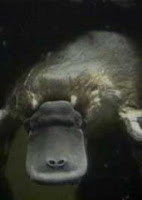Wednesday, November 19, 2008
Friday, November 14, 2008
pugs
Pugs are one of my favorite breed of dogs (not just because I have 2). Last night when I was looking at pics of pugs I ran across this site called pugcolorclub.com and was amazed at what I found. I never knew there were more colors of pugs, other then black and fawn. these are the colors I found.
The colors are Fawn, silver fawn, apricot fawn, stone fawn, apricot, white, silver-grey, chocolate,brindle, or black.
Fawn

Brindles can come in various shades including apricot brindle,and Fawn Brindle
Apricot Fawn
Black
Apricot ~ A rich burnt orange color,unlike like a fawn with apricot hues in the coat.
Albino (notice lack of pigment.)
Posted by Bethany at 4:46 PM 0 comments
Saturday, April 12, 2008
Blake Lewis - You Give Love a Bad Name
HE IS SOOOO AWESOME!!!!!!!
Posted by Bethany at 8:09 PM 2 comments
Tuesday, March 18, 2008
Wednesday, March 12, 2008
Alvin And The Chipmunks - Apologize: Timbaland
This is so cute!
Posted by Bethany at 4:08 PM 0 comments
Tuesday, March 11, 2008
Platypus








 The platypus is among nature's most unlikely animals. In fact, the first scientists to examine a specimen believed they were the victims of a hoax. The animal is best described as a hodgepodge of more familiar species: the duck (bill and webbed feet), beaver (tail), and otter (body and fur). Males are also poisonous. They have sharp stingers on the heels of their rear feet and can use them to deliver a strong toxic blow to any foe.Platypuses hunt underwater, where they swim gracefully by paddling with their front webbed feet and steering with their hind feet and beaverlike tail. Folds of skin cover their eyes and ears to prevent water from entering, and the nostrils close with a watertight seal. In this posture, a platypus can remain submerged for a minute or two and employ its sensitive bill to find food.These Australian mammals are bottom feeders. They scoop up insects and larvae, shellfish, and worms in their bill along with bits of gravel and mud from the bottom. All this material is stored in cheek pouches and, at the surface, mashed for consumption. Platypuses do not have teeth, so the bits of gravel help them to "chew" their meal.On land, platypuses move a bit more awkwardly. However, the webbing on their feet retracts to expose individual nails and allow the creatures to run. Platypuses use their nails and feet to construct dirt burrows at the water's edge.Platypus reproduction is nearly unique. It is one of only two mammals (the echidna is the other) that lay eggs.Females seal themselves inside one of the burrow's chambers to lay their eggs. A mother typically produces one or two eggs and keeps them warm by holding them between her body and her tail. The eggs hatch in about ten days, but platypus infants are the size of lima beans and totally helpless. Females nurse their young for three to four months until the babies can swim on their own.
The platypus is among nature's most unlikely animals. In fact, the first scientists to examine a specimen believed they were the victims of a hoax. The animal is best described as a hodgepodge of more familiar species: the duck (bill and webbed feet), beaver (tail), and otter (body and fur). Males are also poisonous. They have sharp stingers on the heels of their rear feet and can use them to deliver a strong toxic blow to any foe.Platypuses hunt underwater, where they swim gracefully by paddling with their front webbed feet and steering with their hind feet and beaverlike tail. Folds of skin cover their eyes and ears to prevent water from entering, and the nostrils close with a watertight seal. In this posture, a platypus can remain submerged for a minute or two and employ its sensitive bill to find food.These Australian mammals are bottom feeders. They scoop up insects and larvae, shellfish, and worms in their bill along with bits of gravel and mud from the bottom. All this material is stored in cheek pouches and, at the surface, mashed for consumption. Platypuses do not have teeth, so the bits of gravel help them to "chew" their meal.On land, platypuses move a bit more awkwardly. However, the webbing on their feet retracts to expose individual nails and allow the creatures to run. Platypuses use their nails and feet to construct dirt burrows at the water's edge.Platypus reproduction is nearly unique. It is one of only two mammals (the echidna is the other) that lay eggs.Females seal themselves inside one of the burrow's chambers to lay their eggs. A mother typically produces one or two eggs and keeps them warm by holding them between her body and her tail. The eggs hatch in about ten days, but platypus infants are the size of lima beans and totally helpless. Females nurse their young for three to four months until the babies can swim on their own.Posted by Bethany at 9:24 AM 3 comments
Thursday, February 14, 2008
Five Weird Things About Me
1. I play baby Mario and baby Luigi with my brother!
2. I chew my toenails.
3. I'm almost 12 and I wear a size 7-8 in little girls clothing (and boys)
4. I HATE to wear dresses!!
5. My sister (gotcha!)
I tag anybody who reads this. If you don't have a blog just put your list in my comments.
Posted by Bethany at 11:22 AM 6 comments



















